
Aquaculture pond of Mr. Nguyen Thanh Nhan's family.
According to survey information from the Project on Developing Smart Agricultural Value Chains Adapting to Climate Change in Tra Vinh Province and the consulting unit (Hiep Chi Consulting Company Limited): Tra Vinh's current demand for black tiger shrimp is about 2 billion shrimp/year. Tra Vinh's shrimp seed source can only supply 25% of local demand; 75% of shrimp seed is imported from other provinces: Ninh Thuan, Binh Thuan, Nha Trang, Bac Lieu, Ca Mau, Ben Tre, Kien Giang.
Tra Vinh currently has 03 facilities producing quality shrimp breeds: BIO BLUE Vietnam Import-Export Company Limited - Tra Vinh province branch; Thong Thuan Seafood Joint Stock Company - Tra Vinh and Tra Vinh University Aquaculture Research Center mainly produce whiteleg shrimp breeds and a small part of black tiger shrimp breeds. Companies buy quality black tiger shrimp broodstock from Moana Vietnam Company Limited located in Ninh Thuan for breeding and raising into quality breeds, with a fairly high selling price of 130 - 180 VND/head. Recently, businesses have reduced and stopped producing black tiger shrimp breeds, currently only Tra Vinh University Aquaculture Research Center produces about 02 million black tiger shrimp breeds/year.
In addition to the above 3 facilities, Tra Vinh has about 50 small-scale shrimp seed production and breeding facilities, with an average of 10 million seeds/farm. These facilities often buy parent shrimp of unknown origin, or buy shrimp larvae from other provinces (Ninh Thuan, Ben Tre , Ca Mau, etc.) to breed into shrimp seeds, selling them at a price of 30 - 50 VND/shrimp. The shrimp seed production and breeding facilities in Tra Vinh province meet about 25% of the local demand for shrimp seeds, the rest must be imported from other provinces (40% from Ninh Thuan; 35% from other provinces in the Mekong Delta). Therefore, the quality of shrimp seeds cannot be controlled and guaranteed.
Currently, shrimp hatcheries in Tra Vinh mainly produce and raise whiteleg shrimp, the output of black tiger shrimp has decreased by 30 - 40% compared to previous years, because mangrove farmers have increased crab farming and the area of black tiger shrimp farming is being converted to whiteleg shrimp farming. Shrimp hatcheries only take black tiger shrimp larvae for raising when farmers pre-order with a minimum quantity of 20,000 shrimp and must pre-order 07 - 10 days in advance.
Talking to us, farmer Nguyen Thanh Nhan, Son Lang hamlet, Long Son commune, Cau Ngang district, one of the households that both raises aquatic products and supplies seeds as well as medicine and aquatic feed to farmers.
According to Mr. Nhan, every year, he cooperates with enterprises in Ninh Thuan province to supply shrimp seeds to farmers. In 2025, he cooperates to supply 300,000 tilapia seeds to 10 households. During the farming process, he supports part of the cost of medicine and aquatic feed and will recover it after harvest. For the tilapia farming model, in addition to input linkage, he also ensures output for farmers. Because this is a new model, farmers intercrop tilapia with white-leg shrimp, after 135 days of farming, they harvest the fish, then harvest the shrimp. This form of farming improves the water environment, suitable for the economic conditions as well as the area of each household.
Mr. Nhan implements intensive tilapia and shrimp farming models. Farming according to this process is easy to care for, ensuring that the aquaculture area still achieves output. For shrimp, the farming process requires higher techniques and water environment than fish. Therefore, during the farming process, he takes water directly from the fish pond, processes it and puts it into the shrimp pond. For fish, treated pond water can be put into the fish pond. Applying this farming process helps shrimp farming limit diseases. The intercropping farming model, the average farming area is from 200,000 - 300,000 shrimp fry/ha; 600,000 - 700,000 fish fry/ha, with a profit of about 500 million VND/ha, of which the profit from shrimp is about 150 million VND/ha. The intensive fish farming model has a profit twice as high as the intercropping farming model. This season, he is raising 600,000 white-leg shrimp in 2 ponds; in the remaining 3 ponds, he applies rotational farming of shrimp or fish. Farming in a rotational manner reduces investment costs and limits risks.
In the first 4 months of 2025, the progress of whiteleg shrimp farming is still slow, especially high-density intensive farming, 285ha lower than the same period, due to hot weather and unstable pond environment. The aquaculture area in April 2025 reached 8,851ha, increasing the 4-month farming area to 33,057ha, mainly brackish and salty farming, of which the farming area of black tiger shrimp was 14,717ha, crab 14,019ha, whiteleg shrimp 3,464ha, reaching 54.62% of the plan. However, the unstable water environment, hot weather, and the development of pathogens caused damage to 38 million black tiger shrimp with an area of 207ha and 281 million whiteleg shrimp with an area of 360ha. Total seafood output in the month reached 18,485 tons, raising the first 4 months of the year to 51,096 tons, of which aquaculture output reached 36,513 tons, 2,528 tons higher than the same period.
According to Mr. Tran Truong Giang, Director of the Department of Agriculture and Environment, although the current shrimp price has decreased compared to March 2025, the price of black tiger shrimp is still 50,000 VND/kg higher than the same period last year, white-leg shrimp has increased from 2,000 - 8,000 VND/kg depending on size. Regarding the water environment, the current weather is basically stable, diseases in aquaculture are regularly monitored and controlled, so the level of damage is not high, farmers in brackish water areas are currently focusing on shrimp farming, reaching 58% of the plan. The harvest output reached 20.41% of the plan, up 5.85% over the same period.
According to forecasts, seafood prices will decrease in the near future due to market competition with other countries during shrimp harvest time, taxes, etc. However, the province is focusing on researching solutions for deep processing of seafood, creating expanded links, and finding markets.
Article and photos: MAN QUAN
Source: https://www.baotravinh.vn/kinh-te/can-lien-ket-chuoi-cung-ung-con-nuoi-thuy-san-giup-nong-dan-an-tam-san-xuat-45669.html





![[PHOTO] Hanoi fences off demolition of "Shark Jaws" building](https://vphoto.vietnam.vn/thumb/1200x675/vietnam/resource/IMAGE/2025/5/25/1b42fe53b9574eb88f9eafd9642b5b45)
![[Photo] French President Emmanuel Macron and his wife begin state visit to Vietnam](https://vphoto.vietnam.vn/thumb/1200x675/vietnam/resource/IMAGE/2025/5/25/03b59c7613144a35ba0f241ded642a59)
![[Photo] Ea Yieng commune settlement project abandoned](https://vphoto.vietnam.vn/thumb/1200x675/vietnam/resource/IMAGE/2025/5/25/57a8177361c24ee9885b5de1b9990b0e)
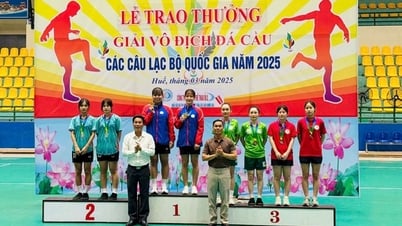


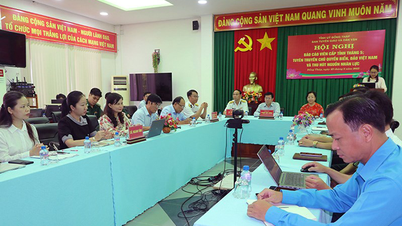
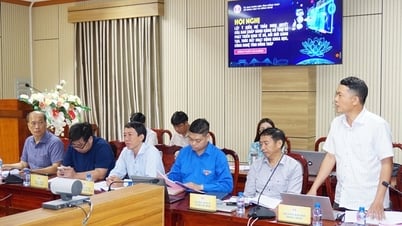





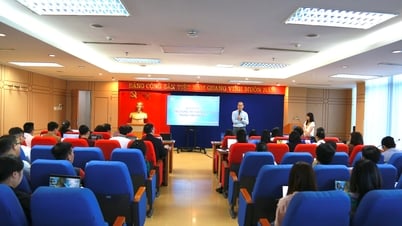





![[Photo] Funeral of former President Tran Duc Luong in Quang Ngai](https://vphoto.vietnam.vn/thumb/1200x675/vietnam/resource/IMAGE/2025/5/25/ccf19a3d8ea7450bb9afe81731b80995)



























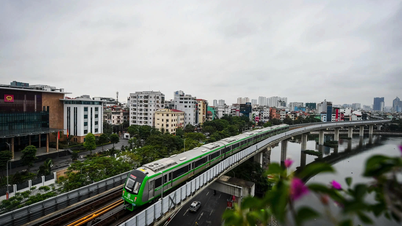


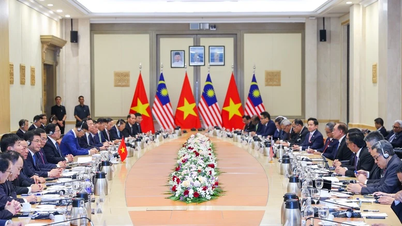

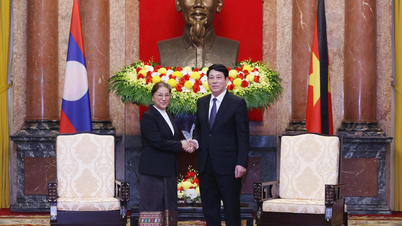










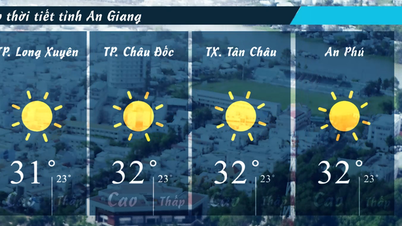

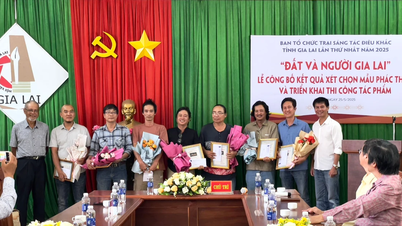

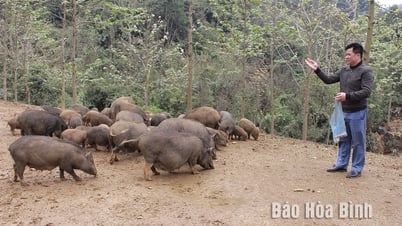

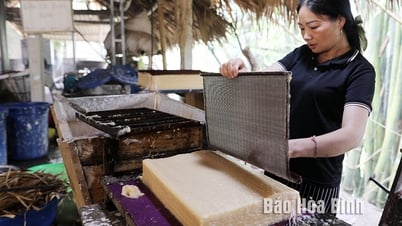













Comment (0)